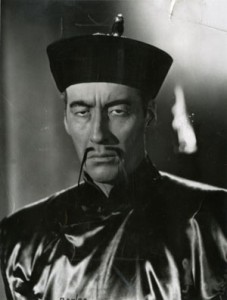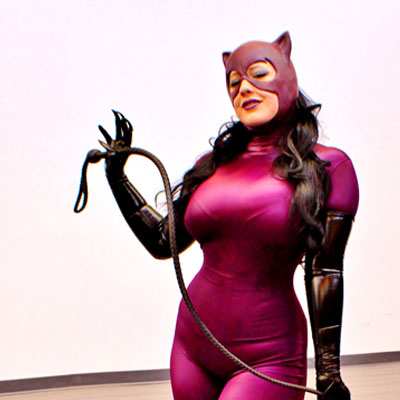Over the past few articles, we have covered a lot of different tips for creating your epic super villain, regardless of their plot, powers, or personality. All of these tips are designed to help you create a super villain that is going to be a real challenge for your superhero, or any other superhero you would care to throw at the super villain. We’ve been talking about building epic super villains.
These tips, from the past few articles include:
- Tip 1. Forget the idea that “the villain is the hero of their own story”
- Tip 2. Make the Villain Mysterious
- Tip 3. The Villain has to Choose to be Evil
- Tip 4. Make the Villain Credible
- Tip 5. Make the Villain Scary
- Tip 6: Never Make the Villain a Nemesis
Tip 7. Never get caught.
And now, we’ve come to the final and perhaps ultimate tip for making an epic super villain: never let your super villain get caught.
The best villains are the ones who never let themselves be put in prison. Instead, they will always hover over the hero’s lives, and the hero’s world, like a menacing cloud. There is always going to be the anticipation for the next battle between villain and hero, because as long as the villain is never caught, the war between villain and hero is never ended. Instead the hero, and your readers, will always be tensely awaiting the next time that the villain chooses to strike.
And, if you have created your super villain properly, they can even continue to menace the hero long after the super villain’s death, giving proof to Shakespeare’s line that “The evil that men do lives after them; The good is oft interred with their bones.”
Consider it this way:
- A villain who has been captured is brought down to the level of the rest of the prison population. There is nothing to distinguish the villain from conmen, car thieves, and murderers. Instead, he becomes just another number in the penal system. Now, granted, certain superpowered villains will need special handling, but the end result is the same.
- A villain in prison orange is a subject for pity. In comic books especially, the costumes that villains wear project a sense of power and menace. In prison coveralls, there’s none of that. The villain is simply another inmate. All of the work that you have done to make the villain epic is going to be stripped away the second the prison bars clanged shut on their cell. They are no longer epic, they’re pathetic.
While getting caught is okay for ordinary, run-of-the-mill super villains, no epic super villain would ever let that happen.
Now, at this point, someone’s going to mention the Joker who has been put in Arkham Asylum so many times by the Batman that I’m sure it’s crossed the authorities minds to simply install a revolving door on the Asylum wall so that the Joker doesn’t cause too much damage the next time that he escapes. The Joker continually gets captured by Batman. And yet, he still approaches the level of epic.
The thing is, death is the only way to stop the Joker, and since the DC Comics powers-that-be have decided that killing the Joker is the one thing that Batman will never do, putting the Joker behind bars has no meaning. Batman has never won against the Joker, at least not in modern continuity. Instead, the Joker continues on his killing sprees, pausing just long enough within the Asylum’s walls to catch his breath before escaping and killing again. Because the writers and editors at DC comics have decided to write the Joker in this way, it’s effectively the same as if they said that the Joker never gets caught.
As far as other super villains go, how do you make them epic without resorting to the revolving Asylum door that the Joker has? Here are a few suggestions:
Always have escape routes for the villains. Back in the days of the old pulp magazines and movie serials, the villains always had a means of escaping whenever the heroes came close to capturing them. Sometimes, it was a hidden passageway. Other times, a trap door. Still other times, they would escape in disguise. While an epic super villain appears to be unstoppable to the reader, he will still always have a contingency plan for when things go south.
Always find ways for them to cheat death. While this is a close parallel to the previous suggestion about having escape routes, it actually goes a lot further than that. The epic super villains can actually be killed, time and again, and yet they continue to return to threaten the hero and all the hero holds dear. In the simplest cases, it may be that the villain’s body is never found after the villain was shot/stabbed/blown up. In other, more elaborate cases, the villain can actually take over the body of another person. Or, perhaps they have a body double that gets killed in their place. Finally, at the most extreme cases, the villain is effectively immortal. Like the character of Brainiac from Superman, so long as one line of his code remains, he will rebuild himself and return.
Let the villain wins sometimes. We’ve talked about making the epic super villain seeming to be unstoppable, and there is no better way to drive this point home to the reader, then actually letting the villain achieve his goals. This can actually ramp up the dramatic tension of the story, because it shifts the hero’s focus from trying to stop the villain, to trying to undo the villain’s victory.
For some villains, death is preferable to imprisonment. From the classic movie gangsters of the 1930s who swore: “you’ll never take me alive, copper!” to the super villains who have come up with doomsday weapons that start the countdown the moment the villain’s heart stops beating, there is a long tradition of villains who would rather die than go to prison. Choosing never to be taken alive speaks to a level of fanaticism and desperation, and it can make the villain even more frightening. For the most hard-core of villains, they can express their hatred and spite of the superheroes by trying to reach a final act of vengeance upon them.
Let’s face it, for villains to subject themselves to trial and jury of commoners and be imprisoned for their acts? It’s not the mark of a real epic super villain.
Our final example for this series of articles is a classic, and somewhat controversial, pulp villain. The insidious Dr. Fu Manchu was the creation of writer Sax Rohmer who first appeared in the novel the insidious Dr. Fu Manchu in 1913, and would continue to menace Western civilization for another 13 novels, as well as several films, comics, and other works. Dr. Fu Manchu was the head of a large organization of spies, thieves, and assassins, all dedicated to the overthrow of the Western nations. He was as notorious for his exotic methods of dispatching his enemies, as he was for continuing to cheat death time and again. He is the perfect example of a villain who was never caught, and who was always assumed by the heroes of the stories to be hatching yet another evil plan that would strike the Western world. The doctor was controversial from the 1930s to the present day for stereotyping Asians,and is the fictional character perhaps most identified with the idea of the “yellow peril.” Fu Manchu’s creator had the following to say about his villain:
Of course, not the whole Chinese population of Limehouse was criminal. But it contained a large number of persons would left to their own country for the most urgent of reasons. These people knew no way of making a living other than the criminal activities that had made China too hot for them. They brought their crimes with them.
Regardless of the controversy, the fictional character and his actions in the stories portrayed such a frightening ability to cheat death again and again that he is the perfect, almost clichéd, example of the villain who always had plans to never get caught.
All trademarks and characters are the property of their respective owners. No challenge to any trademark status or ownership is made or contemplated. Any images used in this post are either Public Domain, or are used under Creative Commons licenses, or under the Terms of Fair Use under International Copyright Law which allows such use for comment and review purposes.
That’s it for the series on writing the Epic Super Villain. What did you think? Let me know in the comments!






